Daiichi Sankyo Company, Limited
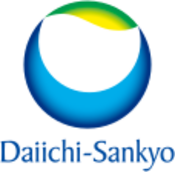 | |
Native name | 第一三共株式会社 |
|---|---|
Romanized name | Daiichi Sankyō kabushiki gaisha |
| Type | Public KK |
| TYO: 4568 TOPIX Large 70 Component TOPIX 100 Component Nikkei 225 Component | |
| Industry | Pharmaceutical |
| Predecessors |
|
| Founded | Tokyo, Japan (2005) (by merger) |
| Headquarters | Daiichi Sankyo Building A/B 3-5-1, Nihonbashi-honcho, Chūō-ku, Tokyo 103-8426, Japan |
Key people | |
| Products |
|
| Revenue | |
Number of employees | 17,435 (2023) |
| Website | http://www.daiichisankyo.com |
| Footnotes / references [4] | |
Daiichi Sankyo Company, a Tokyo-based global pharmaceutical leader, operates across various sectors of the medical industry, providing an extensive portfolio of treatments for a wide range of conditions.
In the cancer domain, they offer innovative treatments like trastuzumab deruxtecan, gefitinib, bicalutamide, and tamoxifen. They also provide drugs for pain management, neurological disorders, such as Alzheimer's, and epilepsy.
Their diabetes and heart disease portfolio includes products like teneligliptin, canagliflozin, pravastatin, and edoxaban, while their gastrointestinal and infectious disease lineups offer treatments like esomeprazole and vaccines for various conditions.
Daiichi Sankyo also contributes to the skincare and oral care sectors with products such as Transino and Breath Labo. Their range even extends to over-the-counter medicines, animal healthcare products, cosmetics, medical equipment, and food products.
In a partnership with Guardant Health, they are developing a companion diagnostic for a lung cancer treatment. Founded in 1899, Daiichi Sankyo's legacy of innovation continues to shape the global pharmaceutical landscape.
Macro Analysis edit edit source
The global macroeconomic environment has a significant influence on the performance of Daiichi Sankyo and the pharmaceutical industry as a whole.
A PESTLE Analysis of the Pharmaceutical Industry shows that the future holds mixed results.[5]
Economic edit edit source
The recent inflation print shows that the annual inflation rate of the yen has dropped to 3% from 4% the previous month, settling into an acceptable range. This is a positive sign for companies like Daiichi Sankyo as it reduces the cost pressure on raw materials and other inputs for production.
However, over the last 3 years, the value of the yen has dropped in relation to the dollar, meaning costs may rise as indicated by an increase in cost of sales by 3.3% from Q4 2021 to Q4 2023. But this appears to be a negligible factor in Daiichi Sankyo's success, as the company experienced in increase in operating profit of 89% over the same period.
Sociocultural edit edit source
Changing sociocultural factors such as an aging population and growing obesity rates has a positive impact on Daiichi Sankyo, as it specialises in a variety of pharmaceuticals associated with treating diseases linked to aging (e.g. Anti-hypertensives, Anti-epileptics, and drugs for: Type 2 diabetes, pain, bone erosion associated with rheumatoid arthritis, lowering cholesterol, etc.)[6]
Technological edit edit source
A growing biotechnology industry positively impacts the company, with the beginning of human trials of drugs designed by AI indicating a potential revolution in drug discovery. With this inevitably leading to significant investment and profit for companies within the pharmaceutical industry. [7]
AstraZeneca, a partner of Daiichi Sankyo for an antibody-based tumour treatment[8], has signed a research collaboration and licensing deal with Quell Theraputics. This company uses genetic engineering of regulatory T-cells to treat autoimmune diseases, a new use of cell therapy outside of oncology. This, along with other examples of genetic engineering in treatment, alludes to a technological boom in the biotech industry resulting in large growth in the pharmaceutical market.
The S&P 500 gained 2.4% and the NASDAQ jumped 3.3%, indicating a positive market sentiment which could benefit the company. However, the tightening of interest rates, with the US 10-year moving from 4.06% to 3.83%, could increase the cost of borrowing for the company.
Industry Overview edit edit source
Daiichi Sankyo operates in the pharmaceutical industry, which is characterised by high levels of research and development, stringent regulatory environments, and intense competition. The industry is driven by innovation, with companies constantly seeking to develop new treatments and therapies. The industry has been positively impacted by the COVID-19 pandemic, with increased focus on healthcare and accelerated vaccine development.
Competitor Comparison edit edit source
The company's key competitors are Merck & Co Inc, Takeda Pharmaceutical Co Ltd., Astellas Pharma Inc, and Chugai Pharmaceutical Co Ltd., with the latter 3 companies being headquartered in Japan and the former being headquartered in the United States.
Daiichi Sankyo's primary income stream comes from Japan, any revenue generated from T-DXds and Dato-DXds must be split by 50% with AstraZeneca according to their partnership agreement for sales outside of Japan (See in Products). As such, their primary competitors will be located in Japan.
Daiichi Sankyo is the only company to focus heavily on breast cancer treatment in contrast to its competitors, with only Chugai Pharma equalling it in this area, with Chugai having several anti-HER2 monoclonal antibodies, competing with Daiichi Sankyo's T-DXd drugs (ENHERTU). However, Daiichi Sankyo heavily outcompetes Chugai in terms of revenue made from oncology drugs, with Daiichi Sankyo's oncology revenue at >900 Bn JPY as of 2023 and Chugai's at 256 Bn JPY as of 2022.
The Japanese competitors, although they do focus on oncology development, all focus on different cancers and cancer types. This is due to competition within the oncology sector being inherently minimal as a result of the vast array of potential drug targets, frequently leading to collaboration as opposed to competition.
Company Overview and Breakdown edit edit source
Daiichi Sankyo Co., Ltd. is a Japan-based company primarily engaged in the manufacture and sale of pharmaceuticals. The company is involved in the research, development, manufacture, and sale of pharmaceuticals, over-the-counter drugs, and vaccines. The company has outlined a 5-Year Business Plan for Sustainable Growth which outlines the company's plans from FY2021 - FY2025.
The 5-Year Plan is built upon 4 key strategic pillars[9], with these being:
Maximise 3ADCs edit edit source
- Maximise ENHERTU and DAto-DXd through strategic alliance with AstraZeneca
- Maximise HER3-DXd without a partner
- Expand work force and supply capacity flexibly depending on changes around product potential
Profit growth for current business and products edit edit source
- Maximise Lixiana profit
- Grow Tarlige, Nilemdo, etc. quickly
- Transform to profit on structure focused on patented drugs
- Profit growth for American Regent and Daiichi Sankyo Healthcare
Identify and build pillars for further growth edit edit source
- Identify new growth drivers following 3ADCs
- Select and advance promising post DXd-ADC modalities
edit edit source
- Patients: Contributing to patents through "Patient Centric Mindset"
- Shareholders: Balanced investment for growth and shareholder returns
- Society: Environment load reduction across the value chain, and actions against pandemic risks
- Employees: Create one DS culture through fostering our core behaviours
The first 2 strategic pillars are outlined below in "Products".
Daiichi Sankyo has several emerging candidates for new growth following 3ADCs. One such driver is the development of DS-7300 which has shown promising durable response in patients with several types of advanced cancer, this is a "first-in-class" B7-H3 directed DXd antibody drug conjugate (ADC), which continues to show promising durable tumour response in patients with several types of heavily pre-treated cancers, including lung, prostate or oesophageal cancer. In 2022, the drug was found to have a response rate of 32%, with 32 responses in 118 patients with various solid tumours.[10]
DS-6000, a CDH6-directed ADC, has also entered development. This drug targets patients with advanced ovarian cancer or renal cell carcinoma. Patients with these diseases have very low survival rates, at 30% and 15% respectively. CDH6 is overexpressed significantly in both of these cancers. Preliminary efficacy results in 20 evaluable patients included six partial responses (50% reduction in tumour size), 12 patients reported with stable disease (Neither increases in size >20%, nor decrease >30%) in platinum-resistant ovarian cancer. Eight CA-125[11] (gold standard ovarian cancer marker) responses observed in 17 evaluable patients with ovarian cancer.[12]
The company is also taking steps to create shared value with stakeholders via several measures, such as increasing dividend yield per share from 27 JPY to 30 JPY in FY2022, and joining RE100, a global initiative aiming to use 100% renewable energy for electricity consumed in business activities[13]
As of 2023 Apr, the revenue and revenue in oncology targets for 2025 have been vastly exceeded, with current values at 2.0 Tr JPY and >900 Bn JPY, respectively[14]. However, the USD/JPY exchange ratio needs to be taken into account. The exchange rate in 2021 being 1 USD = 105 JPY, and the exchange rate at the time of 2023 Apr being 1 USD = 130 JPY, and as of July 2023, 1 USD = 138 JPY. This indicates that an increase in revenue may be misleading depending upon how much of Daiichi Sankyo's revenue comes from overseas. As of 2022, overseas sales made up 58% of total sales.[15]
Products edit edit source
The company specialises in a diverse array of pharmaceutical goods, with drugs devoted primarily for oncological and cardiovascular treatment, with its 2 flagship products being ENHERTU® a HER2 directed antibody drug conjugate (ADC) used in the treatment of HER2 positive breast cancer, and LIXIANA® a direct factor Xa inhibitor, used to prevent blood clots and thus inhibiting risk of heart attack and stroke.[16]
The company entered a collaboration with AstraZeneca in 2020 for a Daiichi Sankyo DXd (potent DNA topoisomerase I inhibitor) antibody drug conjugate (ADC), with $1 billion being paid upfront to Daichii Sankyo from AstraZeneca and a further $5 billion upon achievement of future regulatory and sales milestones. The company is developing a number of DXd drugs, known as the "3ADCs" in the company's R&D pipeline, however the agreement with AstraZeneca concerns Dato-DXd drugs. Both companies will jointly develop and commercialise Dato-DXds worldwide, except with Daiichi Sankyo holding exclusive rights in Japan[17]. This is the second global collaboration with AstraZeneca, with the first being a similar agreement for Daiichi Sanyo's ENHERTU®.
The 3ADCs are a crucial strategic pillar of Daiichi Sankyo's 5-Year Plan, with oncology making up a significant portion of the revenue target by FY2025 (Total Revenue: 1.6 Tr HPY, Oncology > 600.0 Bn JPY), and ENHERTU® being a significant portion of oncology revenue (~90%).[18]
Other product avenues are also explored in DS's 5-Year Plan, with another strategic pillar being "Profit Growth for Current Business and Products", with cardiovascular-targeting drugs such as LIXIANA® providing a steady stream of revenue (>220.0 Bn JPY), with increased product value being provided via offering a variety of additional dosages and administration routes. Sustainable growth in the business outside of oncology is further being aimed for, with sales for: Tarlige®, Injectafer®, Venofer®, Nilemdo®, being forecasted to increase by FY2025, as well as via additional formulation
Dato-DXd edit edit source
Trophoblast cell surface antigen 2 (TROP2) is highly expressed on a variety of epithelial tumours and correlates with a poor prognosis, Dato-DXd is being developed as a novel TROP2-directed ADC. Dato-DXd demonstrated potent antitumor activity against TROP2-expressing tumors via efficent payload delivery into tumors alongside acceptable safety profiles in preclinical models, suggesting Dato-DXd could be a valuable treatment as it demonstrated a statistically significant improvement in progression-free surivival. However, recent results suggest that early on in treatment, Dato-DXd is not significantly better than the current standard of care chemotherapy.
Daiichi Sankyo has a variety of Dato-DXd products currently in different phases of clinical trials:
Phase 1: edit edit source
- TROPION-PanTumor01 - solid tumours
- TROPION-PanTumor02 - NSCLC (Non-small cell lung cancer), TNBC (Triple negative breast cancer)
- TROPION-Lung02 - NSCLC
- TROPION-Lung04 - NSCLC
- PETRA (AZD5305 combo) - solid tumors
Phase 2: edit edit source
- TROPION-PanTumor03 - solid tumors
- TROPION-Lung05 - NSCLC
- BEGONIA - TNBC
- ORCHARD - EGFR (Epidermal Growth Factor Receptor) mutated NSCLC
- NeoCOAST-2 - recectable* early-stage NSCLC (durvamulab combo) neoadjuvant**
*able to be removed via surgery
**treatment given as first step to shrink tumour
Phase 3: edit edit source
- TROPION-Lung01 - NSCLC
- TROPION-Lung07 - non-squamous* NSCLC
- TROPION-Lung08 - NSCLC
- TROPION-Breast01 - BC (HR+, HER2 low or negative BC)
- TROPION-Breast02 - TNBC (Triple negative breast cancer)
- TROPION-Breast03 - TNBC (mono or durvalumab combo) adjuvant**
*either Adenocarcinomas or large cell (undifferentiated) carcinomas
** treatment given after main treatment to reduce chance of cancer returning by destroying any remaining cancer cells
A list of Dato-DXd drugs currently in clinical trials can be found here in blue.
T-DXd edit edit source
T-DXd is an ADC that uses the HER-2 targeted antibody trastuzumab to deliver a cytotoxic payload selectively to HER2-expressing cells. In the DESTINY-Breast01 phase II clinical trial, T-DXd showed clinical activity in the third-line setting for patients with HER2-positive metastatic breast cancer, these results led to accelerated approval of T-DXd in 2019 as a third-line therapy for patients with metastatic or unresectable breast cancer who have received two or more prior HER2-targeted therapies.[19]
ENHERTU® is approved in over 30 countries for treatment of adult patients with unresectable or metastatic HER2 positive breast cancer.
A list of T-DXd drugs currently in clinical trials can be found here in orange.
HER3-DXd edit edit source
Approximately 10% to 15% of patients with NSCLC in the US and Europe and 30% to 40$ of those in Asia have an EGFR-activating mutation. In these patients EGFR (Epidermal Growth Factor Receptor) -targeted tyrosine kinase inhibitors (TKI) result in high response rate and can provide extended disease control. However, relapse is typical with the development of resistance to EGFR TKI treatment, with the mechanisms associated with resistance being diverse, and a significant amount of which being unidentified.
Given that resistance mechanisms to EGFR TKIs are diverse and the efficacy of chemotherapy is limited, there is a need to develop novel treatment approaches for previously treated EGFR-mutated NSCLC that provide salvage therapy* across a broad spectrum of resistance-associated genomic alteration.
HER3 is expressed across a variety of malignant solid tumors and has been found in 83% of primary** NSCLC tumors. HER3 overexpression is associated with metastatic progression and decreased relapse-free survival in patients with NSCLC. EGFR-mutated NSCLC is associated with higher expression of HER3 compared to EGFR wild-type*** NSCLC.
HER3-DXd is a novel ADC, which specifically targets HER3. In a study 57 patients recieving HER3-DXd the objective response rate**** was found to be 39% and the median progression-free survival***** was 8.2 months. Responses were also observed in patients with known and unknown EGFR TKI resistance mechanisms[20]
A list of HER3-DXd drugs currently in clinical trials can be found here in green.
*treatment recieved after standard treatment has failed
** used to describe the first, or primary tumor, the one from which metastatsis (development of secondary tumors) occurs
*** non-mutated gene
**** The total number of people whose cancer has either gone away (complete response) or shrunk (partial response)[21]
***** Time between treatment aimed at shrinking or controlling cancer, and signs that it has started to grow again[21]
3ADC Conclusion edit edit source
In conclusion, Daiichi Sankyo is developing a wide range of cancer-targeting drugs, with a primary focus on breast and lung cancer, with Dato-DXds targeting advanced or metastatic NSCLC. T-DXds (ENHERTU®) targeting HER2 positive breast cancer, particularly when a patient has received prior anti-HER2 treatment. HER3-DXds targeting EFGR-positive NSCLC, and particularly in cases where the patient has become resistant to first-line treatments (such as EGFR TKIs).
Leadership edit edit source
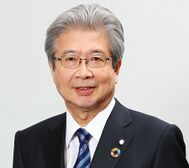
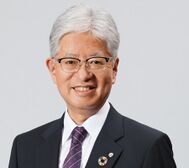
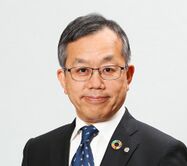
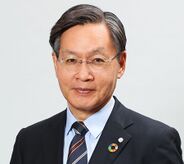
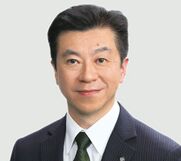
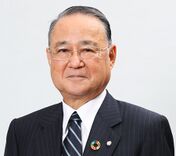

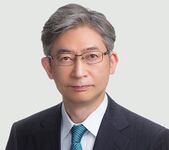
Board Of Directors: edit edit source
Sunao Manabe is the Representative Director Executive, Chairperson & CEO of Daiichi Sankyo, with a Masters in Medical Science (Experimental Pathology) from the University of Tsukukba and a PhD from the University of Tokyo, he has been with the company since 1978.
Hiroyuki Okuzawa is the Representative Director, President & COO of Daiichi Sankyo since April 1, 2023. The reason for which being to ensure that the company with achieve the 5-Year Business Plan via maximizing the value of the 3ADCs, active R&D, supply chain and oncology business investment. He has been with the company since 1986
Shoji Hirashima is a Representative Director, Senior Executive Officer, and Head of Japan Business Unit. He studied Business and Management at UC Berkeley and has a PhD in Molecular Biology, Biochemistry from the University of Tokyo. He has a considerable background in R&D and Business Development, leading the R&D division from 2010 - 2017 and the Business Development and Licencing Department from 2018 - 2020.
Masahiko Ohtsuki is a Director, Senior Executive Officer and the Head of Global DX CDXO. He has has a PhD in Pharmaceutical Science from the University of Tokyo and has been with company since 1987.
Takashi Fukuoka is a Director, Senior Executive Officer, and the Head of Global Corporate Strategy and has been with the company since 1987. He has fulfilled a variety of managerial positions, being promoted to Vice President of Venture Science Laboratories in 2013, Corporate Officer in 2019, and Executive Officer in 2022.
Kazuaki Kama is an Outside Director (Independent Director) and Chairperson of the Board, he has been a Senior Advisor of IHI Corporation since Apr. 2020 and an Outside Director to Daiichi Sankyo since Jun. 2019.
Sawako Nohara is an Outside Director (Independent Director) and Chairperson of the Compensation Committee, and has been since Jun. 2019. To date she is an Outside Director of Keikyu Corporation since Jun. 2021 and and Outside Director of Resona Holdings, Inc. since Jun. 2022. Prior to these roles she has been a Director and President of a variety of companies, including NEC Corporation, NKSJ Holdings, Inc., JAPAN POST BANK Co., and more, providing insight from a varied background.
Yasuhiro Komatsu is an Outside Director and has been since Jun. 2022. He has been a Director and Chairman at a diverse array of Hospitals and Healthcare Departments. Assisting the company with a key strategic pillar, creating shared value with stakeholders, providing insight on creating a "Patient Centric Mindset"[22]
Financials edit edit source
| Year end date | 3/30/2020 | 3/30/2021 | 3/30/2022 | 3/30/2023 |
|---|---|---|---|---|
| All numbers in thousands of JPY. (¥'000) | ||||
| Revenue | 981,793,000 | 962,516,000 | 1,044,892,000 | 1,278,478,000 |
| Cost of Revenue | 343,206,000 | 338,289,000 | 353,328,000 | 363,525,000 |
| Gross Profit | 638,586,000 | 624,227,000 | 691,563,000 | 914,952,000 |
| Operating Expenses: | 499,785,000 | 560,432,000 | 618,537,000 | 794,370,000 |
| General & Administrative Expense | 302,320,000 | 333,079,000 | 358,309,000 | 471,221,000 |
| Research & Development Expense | 197,465,000 | 227,353,000 | 260,228,000 | 341,570,000 |
| Other Operating Expenses | - | - | - | 680,000 |
| Operating Income | 138,801,000 | 63,795,000 | 73,026,000 | 120,582,000 |
| Interest Income | 9,849,000 | 12,916,000 | 6,114,000 | 14,773,000 |
| Interest Expense | 7,813,000 | 2,755,000 | 5,753,000 | 8,480,000 |
| Pretax Income | 141,164,000 | 74,124,000 | 73,516,000 | 126,854,000 |
| Income Tax | 12,196,000 | -1,705,000 | 6,543,000 | 17,666,000 |
| Net Income | 129,074,000 | 75,958,000 | 66,972,000 | 109,188,000 |
| Year end date | 3/30/2020 | 3/30/2021 | 3/30/2022 | 3/30/2023 |
|---|---|---|---|---|
| All numbers in thousands of JPY. (¥'000) | ||||
| Assets: | ||||
| Current Assets: | ||||
| Cash And Cash Equivalents | 424,184,000 | 380,547,000 | 662,477,000 | 441,921,000 |
| Other Short Term Investments | 466,528,000 | 444,368,000 | 181,368,000 | 383,205,000 |
| Inventory | 173,362,000 | 200,860,000 | 217,910,000 | 301,608,000 |
| Assets Held for Sale Current | 134,000 | - | - | - |
| Other Current Assets | 10,548,000 | 10,609,000 | 16,841,000 | 19,206,000 |
| Total Current Assets | 1,384,119,000 | 1,268,420,000 | 1,345,271,000 | 1,495,051,000 |
| Non-Current Assets: | ||||
| Net PPE | 247,053,000 | 265,281,000 | 304,070,000 | 348,912,000 |
| Goodwill | 76,760,000 | 77,706,000 | 83,555,000 | 98,330,000 |
| Other Intangible Assets | 172,499,000 | 172,822,000 | 163,884,000 | 159,609,000 |
| Other Non Current Assets | 12,082,000 | 30,992,000 | 53,515,000 | 95,191,000 |
| Total Non-Current Assets | 721,499,000 | 816,757,000 | 876,131,000 | 1,013,837,000 |
| Total Assets | 2,105,619,000 | 2,085,178,000 | 2,221,402,000 | 2,508,889,000 |
| Liabilities: | ||||
| Current Liabilities: | ||||
| Current Provisions | 5,367,000 | 6,051,000 | 6,795,000 | 7,626,000 |
| Current Debt | 40,389,000 | 20,391,000 | 20,394,000 | 41,396,000 |
| Other Current Liabilities | 15,021,000 | 14,175,000 | 25,619,000 | 24,655,000 |
| Total Current Liabilities | 351,071,000 | 353,571,000 | 395,268,000 | 530,263,000 |
| Non-Current Liabilities: | ||||
| Long Term Provisions | 10,597,000 | 8,741,000 | 18,290,000 | 16,376,000 |
| Long Term Debt | 183,811,000 | 163,441,000 | 143,067,000 | 101,692,000 |
| Other Non-Current Liabilities | 195,844,000 | 228,944,000 | 256,222,000 | 359,100,000 |
| Total Non-Current Liabilities | 448,274,000 | 459,554,000 | 475,262,000 | 532,772,000 |
| Total Liabilities | 799,345,000 | 813,125,000 | 870,530,000 | 1,063,035,000 |
| Equity: | ||||
| Common Stock | 144,633,000 | 144,494,000 | 50,000,000 | 50,000,000 |
| Retained Earnings | 1,241,600,000 | 1,277,332,000 | 1,170,208,000 | 1,231,788,000 |
| Treasury Stock | 162,519,000 | 261,252,000 | 37,482,000 | 36,808,000 |
| Other Equity Interest | 82,095,000 | 111,479,000 | 168,146,000 | 200,874,000 |
| Total Equity | 1,306,274,000 | 1,272,053,000 | 1,350,872,000 | 1,445,854,000 |
| Year end date | 3/30/2020 | 3/30/2021 | 3/30/2022 | 3/30/2023 |
|---|---|---|---|---|
| All numbers in thousands of JPY. (¥'000) | ||||
| Operating Cash Flow | 196,601,000 | 192,207,000 | 139,226,000 | 114,514,000 |
| Investing Cash Flow | 81,673,000 | -39,246,000 | 212,339,000 | -257,782,000 |
| Financing Cash Flow | -91,637,000 | -202,433,000 | -86,231,000 | -89,594,000 |
| Beginning Cash Position | 243,155,000 | 424,184,000 | 380,547,000 | 662,477,000 |
| Changes in Cash | 186,637,000 | -49,472,000 | 265,334,000 | -232,862,000 |
| Effect of Exchange Rate Changes | -5,608,000 | 5,834,000 | 16,595,000 | 12,306,000 |
| End Cash Position | 424,184,000 | 380,547,000 | 662,477,000 | 441,921,000 |
| Capital Expenditure | -52,565,000 | -64,093,000 | -76,682,000 | -67,366,000 |
| Free Cash Flow | 144,036,000 | 128,114,000 | 62,544,000 | 47,148,000 |
| Year end date | 3/30/2020 | 3/30/2021 | 3/30/2022 | 3/30/2023 |
|---|---|---|---|---|
| Earnings per share (EPS) | ¥199.2 | ¥39.2 | ¥34.9 | ¥57 |
| Dividend per share | ¥70 | ー | ¥27 | ¥30 |
| Dividend payout ratio | 35.1% | 68.9% | 77.3% | 52.7% |
| Return on equity (ROE) | 10.1% | 5.9% | 5.1% | 7.8% |
| Dividend on equity (DOE) | 3.5% | 4% | 3.9% | 4.1% |
| Book value per share (BPS) | ¥2,014.9 | ¥663.85 | ¥704.76 | ¥754.09 |
| Equity ratio | 60.6% | 59.6% | 56.7% | 52.4% |
| Total number of common shares | 647 million | 1,939 million | 1,917 million | 1,917 million |
Daiichi Sankyo has shown strong financial performance with revenues increasing by 22% to 1.278 trillion yen and net income increasing by 63% to 108.95 billion yen for the fiscal year ending in March 2023. The company's return on equity (ROE) is 7.8%, indicating efficient use of equity.
Valuation edit edit source
Market Cap
To estimate the value of Daiichi Sankyo it is helpful to consider the Market Capitalisation, which is a calculation of the company's total value based on its current stock price and the number of outstanding shares:
Market Cap = Stock Price * Number of Outstanding Shares
As of 28th July 2023, Daiichi Sankyo's stock price is listed as ¥4,095, with 1.92B outstanding shares.
Thus the Market Capitalisation of Daiichi Sankyo is approximately ¥7.9T or $56.9B, which represents the total market value of the company's equity outstanding and provides an indication of the company's current market value.
Comparing Daiichi Sankyo's Market Cap with that of its peers can provide insights into how the market perceives the company's value relative to its competitors (As of July 2023):
- Takeda Pharmaceutical Co Ltd, Market Cap - $49.8B -Japanese company specialising in gastroenterology, oncology, and neuroscience.
- Astellas Pharma Inc, Market Cap - $27.1B -Japanese pharmaceutical company which competes with Daiichi Sankyo in oncology and other therapeutic areas.
- Chugai Pharmaceutical Co Ltd, Market Cap - $49.1B -Biopharmaceutical company competing with Daiichi Sankyo in Japan and globally in oncology and immunology therapies.
- Merck & Co Inc, Market Cap - $267.1B -Global pharmaceutical company focused on oncology, vaccines, infectious diseases, and cardiovascular medications.
- Pfizer Inc, Market Cap - $204.4B -Global pharmaceutical company engaged in prescription medications, vaccines, and consumer health products.
- Novartis AG, Market Cap - $235.5B -Multinational pharmaceutical company competing with Daiichi Sankyo in cardiovascular drugs, oncology treatments, and immunology therapies.
- AstraZeneca PLC, Market Cap - $169.1B -Pharmaceutical company focused on medications for respiratory, cardiovascular, oncology, and other therapeutic areas, competes with Daiichi Sankyo in cardiovascular drugs and oncology treatments.
- GlaxoSmithKline (GSK), Market Cap - $57.3B -Multinational pharmaceutical company developing pharmaceutical products, vaccines, and consumer healthcare products.
Catalysts edit edit source
Based on the recent developments and news, the following catalysts have been identified that could impact the future stock performance of Daiichi Sankyo:
- New Drug Approvals: Daiichi Sankyo has recently received approval for its drugs in different regions. For instance, VANFLYTA, a FLT3 inhibitor, has been approved in the U.S. and Japan specifically for patients with newly diagnosed FLT3-ITD Positive AML. This could potentially lead to increased revenues for the company, positively impacting the stock performance.
- Progress in Research and Development: For example, their drug, Datopotamab deruxtecan (Dato-DXd), met dual primary endpoint of progression-free survival in patients with advanced non-small cell lung cancer in the TROPION-Lung01 Phase 3 trial. Positive results from clinical trials can often lead to increased investor confidence and a rise in stock prices.
- Expansion in China: ENHERTU, another drug by Daiichi Sankyo, has been approved in China as the first HER2 directed therapy for patients with HER2 low metastatic breast cancer. This approval allows the company to tap into the large Chinese market, potentially leading to increased sales and a positive impact on the stock.
- COVID-19 Vaccine Development: Daiichi Sankyo has initiated a Phase 3 clinical trial of its mutant strain COVID-19 vaccine (DS-5670) in Japan. If successful, this could significantly boost the company's revenues and positively impact its stock performance.
- Corporate Changes: There have been recent changes in the company's corporate structure, including the stock transfer of DAIICHI SANKYO ESPHA CO., LTD. and appointments of new directors and audit & supervisory board members. These changes could potentially impact the company's strategic direction and stock performance.
However, it's important to note that while these developments have the potential to positively impact the company's stock performance, they also carry risks. For example delays or failures in drug development, changes in regulatory environments, or shifts in market dynamics may negatively impact the company's stock performance.
Risk edit edit source
Investing in Daiichi Sankyo involves risks such as market risk, regulatory risk, and competition risk. The company's high valuation ratios also indicate a risk of overvaluation.
Investing in any pharmaceutical/biotech company carries significant inherent risk, as the outcome of a drug's success is unknown until it has been filed and approved by the appropriate regulatory bodies. There are many points of failure for a drug's development, with one at every stage of clinical trials and failure could result in a significant drop in share price for the company. Investing solely on the basis of a drug's success is essentially a gamble, as no matter how much research is done, success is never guaranteed until the drug's approval.
However, Daiichi Sankyo's diverse drug portfolio and drug pipeline may help to mitigate some of the risk associated with this factor.
Investing into the company with foreign currency also causes risk due to the fluctuation of exchange rates, for example if a foreign company doubles in share price, while the foreign currency's exchange rate also doubles, you will have made no profit, or would have lost money in the case that a company experiences no change in share price
Investment Thesis edit edit source
In conclusion, Daiichi Sankyo presents a mixed investment opportunity. The company has strong financial performance and operates in a growing industry. However, the company's high valuation ratios indicate that the stock may be overvalued. Investors should carefully consider these factors before making an investment decision.
References edit edit source
- ↑ "Daiichi Sankyo name current COO Sunao Manabe as firm's new CEO". Pharmafile. 4 December 2019. Retrieved 12 November 2020.
- ↑
- ↑
- ↑ "Value Report 2020" (PDF). Daiichi Sankyo Group. 31 March 2020. p. 45. Retrieved 30 November 2020.
- ↑ https://pestleanalysis.com/pestle-analysis-of-pharmaceutical-industry/
- ↑ https://www.daiichisankyo.com/products/
- ↑ https://www.nasdaq.com/articles/first-human-trials-begin-for-ai-designed-drug
- ↑ https://www.astrazeneca.com/media-centre/press-releases/2020/astrazeneca-and-daiichi-sankyo-enter-collaboration-to-develop-and-commercialise-new-antibody-drug-conjugate.html#!
- ↑ https://www.daiichisankyo.com/files/investors/library/materials/2021/20210405_5th_MTP_E.pdf
- ↑ https://www.daiichisankyo.com/files/news/pressrelease/pdf/202209/20220910_E.pdf
- ↑ https://www.ncbi.nlm.nih.gov/pmc/articles/PMC2764643/#:~:text=CA125%20is%20the%20gold%20standard,progression%20in%20ovarian%20cancer%20patients.
- ↑ https://daiichisankyo.us/press-releases/-/article/ds-6000-suggests-early-clinical-activity-in-patients-with-advanced-ovarian-cancer-or-renal-cell-carcinoma
- ↑ https://www.daiichisankyo.com/files/investors/library/quarterly_result/2022/5thMTP_update_2304.pdf
- ↑ https://www.daiichisankyo.com/files/investors/library/quarterly_result/2022/5thMTP_update_2304.pdf
- ↑ https://www.daiichisankyo.com/investors/financial_highlights/
- ↑ https://www.daiichisankyo.com/products/
- ↑ https://www.daiichisankyo.com/media/press_release/detail/index_3126.html
- ↑ https://www.daiichisankyo.com/files/investors/library/materials/2021/20210405_5th_MTP_E.pdf
- ↑ https://www.aacr.org/about-the-aacr/newsroom/news-releases/t-dxd-yields-superior-outcomes-over-chemotherapy-based-regimens-in-patients-previously-treated-with-t-dm1/
- ↑ https://www.ncbi.nlm.nih.gov/pmc/articles/PMC9401524/
- ↑ 21.0 21.1 https://www.cancerresearchuk.org/about-cancer/find-a-clinical-trial/clinical-trial-results/what-do-clinical-trial-results-mean-0
- ↑ https://www.daiichisankyo.com/about_us/mission-strength/leadership/